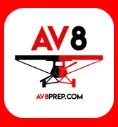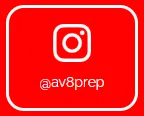Private Pilot License
Versus Airline
Transport Pilot License (ATPL)
Embarking on a career in aviation is a thrilling and rewarding journey, filled with choices and opportunities. One of the most significant decisions you'll face is choosing the right pilot license to pursue. Two primary licenses, the Private Pilot License (PPL) and the Airline Transport Pilot License (ATPL), represent two ends of the spectrum in terms of experience, training, and career possibilities. In this comprehensive guide, we will compare the PPL and ATPL, highlighting their differences and helping you make an informed decision about your aviation career path.
Private Pilot License (PPL): Your Passport to the Skies
The Private Pilot License (PPL) is the entry point for many aspiring aviators. It allows individuals to operate aircraft for personal and recreational purposes, and it is the foundation for higher-level pilot licenses.
Training and Requirements for a PPL
Obtaining a PPL involves the following:
A minimum of 40 hours of flight time, including a minimum of 20 hours of flight training with an instructor and 10 hours of solo flight.
Successful completion of a written examination.
A practical test (checkride) with a designated pilot examiner.
Demonstration of proficiency in various flight maneuvers, navigation, and safety procedures.
Privileges and Limitations of a PPL
With a PPL, you can:
Act as pilot in command (PIC) of an aircraft.
Carry passengers for personal and non-commercial purposes.
Fly for recreational purposes, such as pleasure flights and sightseeing.
However, there are limitations:
You cannot be compensated for your flying services.
Flying in adverse weather conditions, at night, or for compensation requires additional qualifications and ratings.
Airline Transport Pilot License (ATPL): The Ultimate Level of Certification
The Airline Transport Pilot License (ATPL) is the highest level of pilot certification and is a prerequisite for serving as the captain (or first officer in some cases) of a commercial airliner. It opens doors to a broad range of aviation career opportunities.
Training and Requirements for an ATPL
Earning an ATPL is a substantial commitment, typically involving:
A minimum of 1,500 hours of total flight time.
A minimum of 250 hours of flight time as PIC in an aircraft, which can include some of the hours logged during PPL training.
Successful completion of a written examination that covers a broad range of aviation knowledge.
Successful completion of a rigorous practical test (checkride) with an FAA-designated pilot examiner.
The attainment of additional ratings and endorsements, such as the Commercial Pilot License and the Instrument Rating.
Privileges and Limitations of an ATPL
An ATPL grants you extensive privileges:
You are eligible to serve as the captain of a commercial airliner.
You can be compensated for your flying services, opening up various career opportunities in commercial aviation.
You are authorized to fly aircraft that require an ATPL-qualified pilot.
However, there are some limitations:
An ATPL doesn't guarantee employment, but it is a necessary qualification for most airline and commercial pilot positions.
Airline companies often have specific hiring and training requirements beyond holding an ATPL.
PPL vs. ATPL: A Comparative Analysis
Let's compare the Private Pilot License and the Airline Transport Pilot License in several key areas:
Training Hours
PPL: Requires a minimum of 40 hours of total flight time.
ATPL: Requires a minimum of 1,500 hours of total flight time.
Experience
PPL: Designed for entry-level pilots and offers a basic foundation for further pilot training and endorsements.
ATPL: Represents the highest level of pilot certification, indicating a high degree of experience and expertise.
Career Opportunities
PPL: Primarily suited for recreational flying and personal use. While it is the first step in a pilot's career, additional qualifications and hours are needed for most professional opportunities.
ATPL: Opens the door to a wide range of aviation careers, including airline piloting, cargo transport, aerial surveying, and more.
Compensation
PPL: Not authorized to receive compensation for flying services.
ATPL: Eligible for compensation, making it an essential qualification for most professional pilot positions.
Aircraft Type
PPL: Permits the operation of various types of aircraft, but not commercial airliners.
ATPL: Qualifies pilots to operate commercial airliners and other advanced aircraft.
Flight Hours
PPL: A minimum of 40 hours of flight time, including instruction and solo flight.
ATPL: A minimum of 1,500 hours of total flight time, with specific hour requirements as pilot in command (PIC).
Knowledge and Testing
PPL: Requires passing a written examination and a practical test (checkride).
ATPL: Demands a more comprehensive written examination and a rigorous checkride.
Cost
PPL: Generally less expensive to obtain, making it more accessible for those pursuing recreational flying.
ATPL: Requires a substantial financial investment due to the significant flight hours and training involved.
Transitioning from PPL to ATPL
For many pilots, the path from a PPL to an ATPL is a gradual progression that may include obtaining additional ratings, endorsements, and experience. Here are some steps to consider when transitioning from a PPL to an ATPL:
Obtain a Commercial Pilot License (CPL): The CPL is an intermediate step that allows pilots to be compensated for their flying services. To achieve this, pilots must meet hour requirements and pass the CPL written examination and checkride.
Accumulate Flight Hours: After earning a CPL, build flight hours by working as a flight instructor, banner tow pilot, or in other roles that offer valuable experience.
Obtain an Instrument Rating (IR): The Instrument Rating is essential for airline and commercial pilot positions, as it allows pilots to navigate and operate aircraft in a wide range of weather conditions.
Pursue an ATPL: Once you have amassed the required flight hours, experience, and ratings, you can pursue the ATPL by passing the written examination and the ATPL checkride.
HOW TO BECOME A PILOT!
Get your free e-book with your email
Enter your email address to get your E-Book.

Conclusion
The decision between a Private Pilot License and an Airline Transport Pilot License is a crucial one, and it largely depends on your career aspirations and the level of commitment you are willing to invest in your aviation journey. The PPL is the perfect starting point for those who want to explore the joy of flying and gradually work toward more advanced qualifications. In contrast, the ATPL is the gateway to a wide range of professional opportunities in the aviation industry, including airline and cargo pilot positions.
Remember that the path to an ATPL can be a long and challenging one, involving substantial flight hours, knowledge, and experience. Whichever path you choose, the sky is the limit, and your aviation career can be as exhilarating as the adventures you'll have soaring through the clouds.
Elevate Your Skills with AV8 Prep Online Ground School Pilot Education Program
Are you ready to soar to new heights in the world of aviation? Look no further than AV8 Prep's cutting-edge Online Ground School Pilot Education Program.
Enroll Now and Take Flight Toward Your Dreams.
Whether you're aiming for a career in piloting or seeking to expand your horizons into drone operations, AV8 Prep's Online Ground School Pilot Education Program has got you covered. Join our community of aspiring aviators today and get ready to embark on an educational journey like no other.
Testimonials

Matt B.
I can't thank AV8Prep enough for their exceptional Private Pilot Ground School program. With their comprehensive curriculum and knowledgeable instructors, I was able to achieve a remarkable score of 93 on my written exam. The engaging content, interactive lessons, and in-depth explanations truly prepared me for success. AV8Prep's dedication to ensuring their students' understanding and mastery of the material is unmatched. I highly recommend AV8Prep to anyone pursuing their private pilot license. Trust me, it's the best investment you can make in your aviation journey.

Tony D.
I was pleasantly surprised by the exceptional quality of the Private Pilot Course! Within a brief timeframe, I acquired all the essential knowledge and skills required to obtain my private pilot certification. The instructors demonstrated extensive expertise, the course material covered everything comprehensively, and the support offered throughout was truly remarkable. Without hesitation, I enthusiastically endorse this course to anyone seeking to embark on a professional drone piloting journey. It's a worthwhile investment that yields significant returns!

John. C
I owe my success in passing the written FAA exam with a remarkable 97% to AV8Prep's exceptional online ground school. Their comprehensive resources and effective teaching approach made the learning process engaging and ensured I was well-prepared for the exam. I highly recommend AV8Prep to anyone seeking a reliable and effective way to ace their pilot exam.
Instrument and Multi-Engine Rankings on Flight Licenses
Exploring Various Types of Flight Licenses
%20(1).webp)
.webp)
.webp)
%20(1).webp)

Home Office
8669 Ridge Road
Melrose, Florida
Home Airport:
Jacksonville Executive (KCRG)
@2025 Aviate Prep
Privacy Do Not Sell My personal Info Terms & Conditions Imprint Accessibility Statement
Privacy
Do Not Sell My personal Info
Terms & Conditions
Imprint
Accessibility Statement

